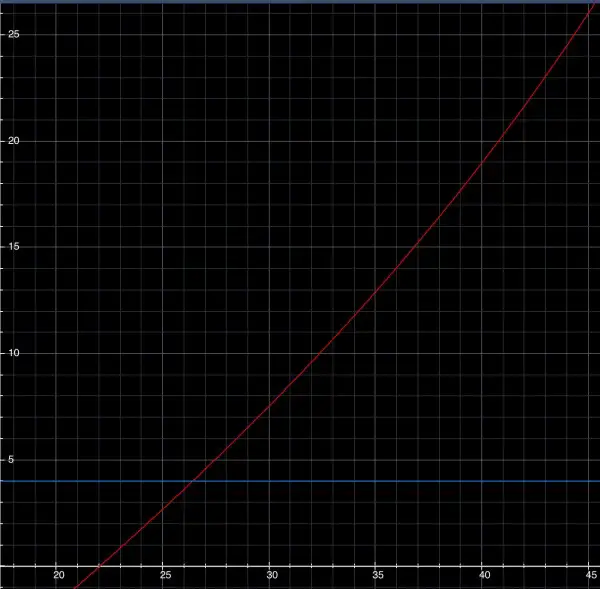The ball can be struck at any angle, but it will travel furthest horizontally if the angle is 45 degrees. In the absence of any further information, let's assume the batsman hits the ball at an angle of 45 degrees. The ball's velocity can be resolved into two components: vertical and horizontal. If u is the speed imparted to the ball by the bat, the vertical and horizontal components are each u√2/2 (or u/√2). The equations for motion under gravity only apply to the vertical component and the horizontal component is just u√2/2. The equation for vertical distance is s=ut√2/2-gt^2/2 where g is the acceleration of gravity (9.81 m/s/s). The equation for horizontal distance is s=ut√2/2, because there is no horizontal component for gravity.
The fielder (catcher) intercepts the ball a height h above the ground, so h=ut√2/2-gt^2/2 where t=1.9 seconds.
So h=1.9√2u/2-4.905*3.61=1.3435u-17.707 approx. This equation relates h and u.
The horizontal distance travelled when the ball is caught is 43.7=1.9√2u/2, from which u=32.5269 m/s.
So h=25.99 m which seems excessive for a fielder playing on a level playing field.
We assumed the angle the bat struck the ball was 45 degrees. Now let's say the angle was ø degrees to the level ground. The horizontal component of u is ucosø and the vertical is usinø. If ø is 90 degrees, for example, there is no horizontal component and the horizontal distance travelled by the ball is zero.
Rewrite the equations: h=utsinø-gt^2/2, and s=utcosø, so u=s/(tcosø) (ø≠90 degrees) and h=stanø-gt^2/2. (When ø=45 this comes to 43.7-17.707=25.99 m as we saw earlier.) Therefore h=43.7tanø-17.707 metres. Note that h only depends on ø so it's independent of the speed of the ball. From this tanø=(17.707+h)/43.7. If 0≤h<4m (just about possible for a tall fielder), tanø<0.4967, and 22<ø<26.4.
(The vertical component of the velocity is usinø. If the ball is allowed to fall to the ground without being caught, h=0=utsinø-gt^2/2 so t(usinø-gt/2)=0 from which t=0 (when the batsman hits the ball) and usinø=gt/2=4.905*1.9=9.32 approx. The horizontal component of the velocity is ucosø and the ball will travel a distance s=utcosø. Interestingly, if we put s=43.7 and t=1.9, ucosø=23 exactly. Do we therefore assume that the fielder was standing at the actual spot where the ball would have landed if it hadn't been caught? If so, the ball was caught at height zero. We can also calculate ø because usinø/ucosø=tanø=9.32/23=0.4052 approx and ø=22.06 degrees approximately, and u=23secø=24.82 m/s approx.)

The red curve (almost a straight line) shows the height in metres against the angle of projection ø. The blue line is the "human cut-off point", the upper limit, for catching the ball after 1.9 seconds at a distance of 43.7m from the batsman. It also shows the height when ø=45º.